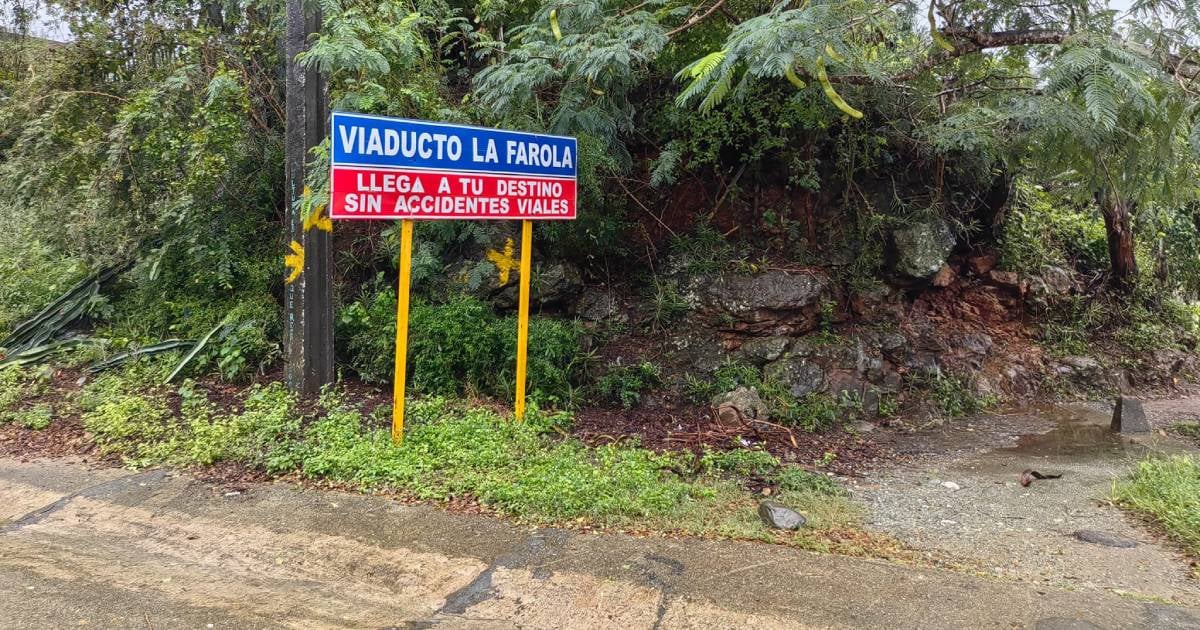
Regarded as one of the seven wonders of Cuban civil engineering, the La Farola viaduct will undergo its first major repair after 59 years of use, recently exacerbated by the impact of Hurricane Oscar and subsequent rains, reported the government portal Cubadebate.
The weather phenomenon caused significant damage to the majestic roadway, including landslides, ground subsidence, and structural damage, worsened by the passage of heavy equipment towards Baracoa. These circumstances prompted a swift intervention by builders from several provinces to ensure the flow of traffic, the newspaper emphasized.
Transport Minister Eduardo Rodríguez Ávila had reported that a technical assessment was being conducted using equipment (drones, sensors, etc.) to evaluate potential damages, and a timeline for diagnosis and proposed solutions was to be established. For this purpose, traffic restrictions on the viaduct were implemented for vehicles weighing up to 30 tons.
This comprehensive diagnosis is carried out by specialists from the Engineering and Design Services Company (Vértice) in Holguín, who warned that the intervention will be highly complex due to the scale of the issues, the rugged terrain, and the technical requirements.
While this diagnosis, scheduled for completion by the end of December, is finalized, work will progress on less complex tasks, such as the repair of the Cagüeybaje section, which already has an approved project, stated the Cuban regime.
The Deputy Governor Carlos Martínez Turro stated that around 40 heavy machines are needed, including trucks and bulldozers, many of which are idle due to a lack of tires, batteries, and lubricants. Additionally, the transit of heavy cargo vehicles will be restricted on the viaduct, redirecting them to alternate routes such as the Guantánamo-Sagua-Moa-Baracoa and Cajobabo-La Máquina-Baracoa roads.
La Farola is traversed by 96% of the people and 83% of goods entering or leaving Baracoa, highlighting its strategic importance for the economy and transportation in the eastern region.
The viaduct, designed by engineer Maximiliano Isoba and built between 1964 and 1965, is an iconic work of the Cuban regime, renowned for its technical solutions and majesty.
To minimize the impact of the repairs, sections of the alternate routes are being rehabilitated, including the Moa-Baracoa road and the Yumurí bridge, the latter of which is currently facing limitations that require urgent attention.
The Provincial Highway Center will lead the investment for the major repairs, and a permanent maintenance crew will be reestablished to ensure the preservation of this important roadway, Cubadebate explained.
The regime claims that it aims to restore full operational capacity to La Farola, ensuring its functionality and reducing its vulnerability to future climatic events.
However, its abandonment for nearly sixty years serves as a reminder that this significant work of civil engineering has not escaped government neglect and the lack of investment in the island's roads. In 2019, the Ministry of Transport acknowledged that more than 75% of Cuba's roads were in fair or poor condition, and frequent reports on social networks indicate that this figure has increased since then.
Filed under: